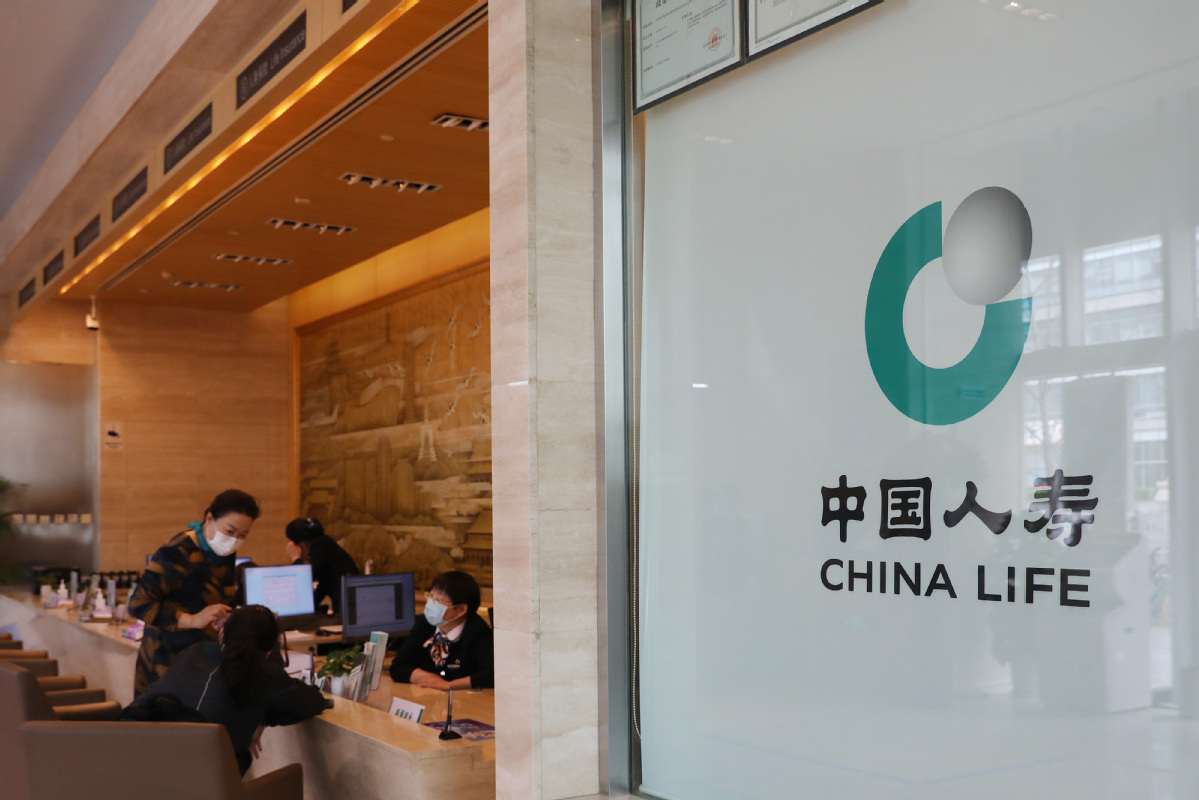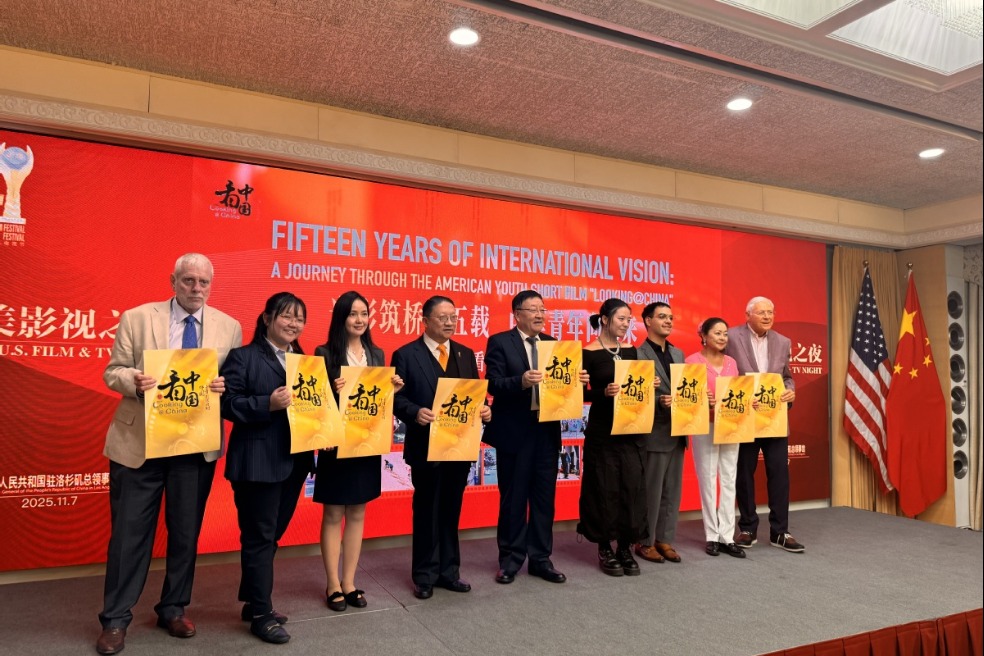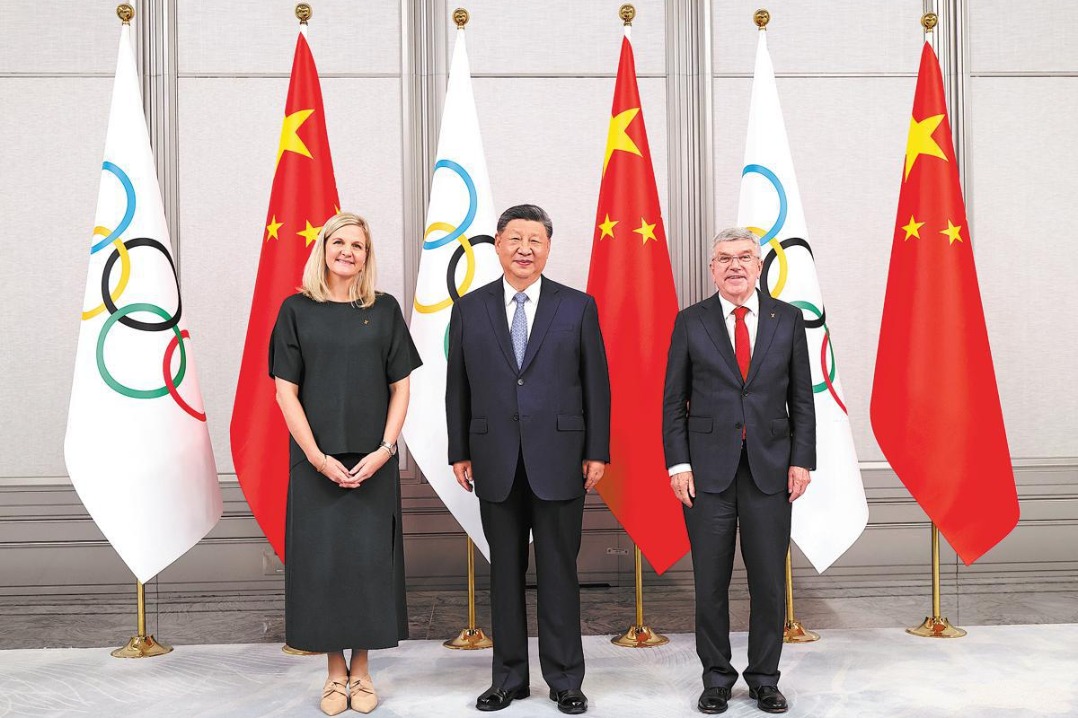Insurance funds boosting tech
'Highly patient' capital satisfying firms' financing needs throughout full life cycle
By SHI JING in Shanghai | China Daily | Updated: 2024-05-27 09:46

It has become hard to imagine life without digital devices, especially smartphones.
While gadgets are becoming more intelligent, chips, their very backbones that make connectivity easier, are becoming smaller in size though larger in terms of importance.
A nail-sized chip used in smartphones now contains more than 10 billion transistors, and each transistor needs to be produced by high-end equipment such as photolithography machines, laser etching machines and thin film equipment, according to Hu Xiao, director of the securities business department of Shanghai-based Advanced Micro-Fabrication Equipment Inc China.
The company went public on the STAR Market at the Shanghai exchange in July 2019, making it one of 25 companies that debuted on the board projected to nurture "hard technologies".
"It is extremely difficult to make major technology breakthroughs in the chip industry. Investment in chipmaking can be stratospheric. Investing in an advanced chip production line requires tens of billions of dollars, which is far beyond the ability of ordinary enterprises. The capital market is thus needed," said Hu.
Yang Fu, executive vice-president of chip design company UNISOC, said continued capital injection is indispensable for technology-intensive industries like integrated circuits. Meanwhile, a market more tolerant of the ups and downs of technology advancement is crucial, she said.
In this sense, insurance capital can fit into the scenario as it is "highly patient" and an advocate of long-term and value investment, said Liu Fan, vice-president of China Life Asset Management Co Ltd, an investment arm of the country's largest insurance group China Life Group.
But this time, CLAMC has adopted the relatively novel method of a secondary fund to invest in emerging industries like integrated circuits.
Late last year, the insurer set up an 11.8-billion-yuan ($1.6 billion) S fund to purchase equities from the government-backed Shanghai Integrated Circuit Industry Investment Fund. Shanghai Advanced Silicon Technology Co Ltd, UNISOC and Advanced Micro-Fabrication Equipment Inc China have all benefited from this newly established fund.
S fund purchases existing interests or assets from primary private equity fund investors. This can be considered PE trading in the secondary market, facilitating capital liquidity.
According to Liu, one merit of insurance capital is that it can meet technological companies' financing needs throughout their entire life cycle. The adoption of S fund is one example, he said.
During the preliminary stage of technology application or industry incubation, equity investment is a better option for insurance companies. When the industry or technology matures, equity investment as well as secondary market investment such as stocks and mutual funds can be adopted by the insurance capital to make its investment more precise, added Liu.
Meanwhile, S fund can achieve "capital relay" from local government to insurance capital, he said.
"Upon government planning and guidance, the emerging industry can realize the development 'from zero to one'. After the industry makes early-stage development, insurance companies and other social capital can step in and help the industry to leapfrog in terms of development," he added.
CLAMC has used diversified investment tools beyond S fund to direct more capital to emerging industries.
In October 2022, it invested 1.99 billion yuan in the form of equity investment in China Electronics Corp to support the latter's development of self-reliant CPU production and operation systems.
Late last year, it set up an asset-backed plan to inject a total of 428 million yuan into manufacturing giants Sany Group and XCMG Machinery to advance the domestic production of high-end equipment.
In mid-April, the National Financial Regulatory Administration, Ministry of Industry and Information Technology and National Development and Reform Commission jointly announced a plan to deepen financial services in the manufacturing industry and advance new type industrialization.
Insurance capital, with risks under control, should provide long-term and stable support for strategic emerging industries via bonds, direct equity investment, PE funds, venture capital and asset management products.
Zhuang Siliang, senior vice-president of CLAMC's innovative investment business, said it is important to move quickly by investing in China's new economic growth engines, as they will serve as new sources of investment returns.
But more importantly, insurance firms should shoulder their responsibility of supporting the development of new quality productive forces.
By the end of March, CLAMC had directed 1.66 trillion yuan of its entrusted capital to modern industries, up 23.3 billion yuan from that in end-2023 and 15 percent on a yearly basis. Of this, 203.4 billion yuan had been used to support strategic emerging industries, while another 87.9 billion yuan was directed to advanced manufacturing. Meanwhile, the company has invested 394.8 billion yuan of the capital in green development-related sectors.
Technology startups' research and development do not always lead to success.
Against that scenario, China Life Group has come up with more than 40 insurance policies specially designed for technology-savvy companies such as biopharmaceutical enterprises or aerospace companies.
It has rolled out a special policy for the safety of chips used in automobiles, said Liu Zhe, deputy general manager for the Shanghai branch of China Life Property and Casualty Insurance Co Ltd.
The insurer's efforts have partly addressed the central government's pilot program to provide insurance compensation for the R&D of the first and major technology equipment that started in 2015.
"With the government taking the lead in choosing the core industries and R&D directions, insurance companies can come up with more products, standards and compensation mechanisms to address the risks in major sectors or projects," said Liu.
"Meanwhile, insurance companies should be supported to roll out more innovative products to cover technology companies' losses concerning R&D expenses, the unexpected suspension of R&D activities and intellectual property rights protection. Only in this way can their risks be effectively dispersed," he added.
shijing@chinadaily.com.cn
























